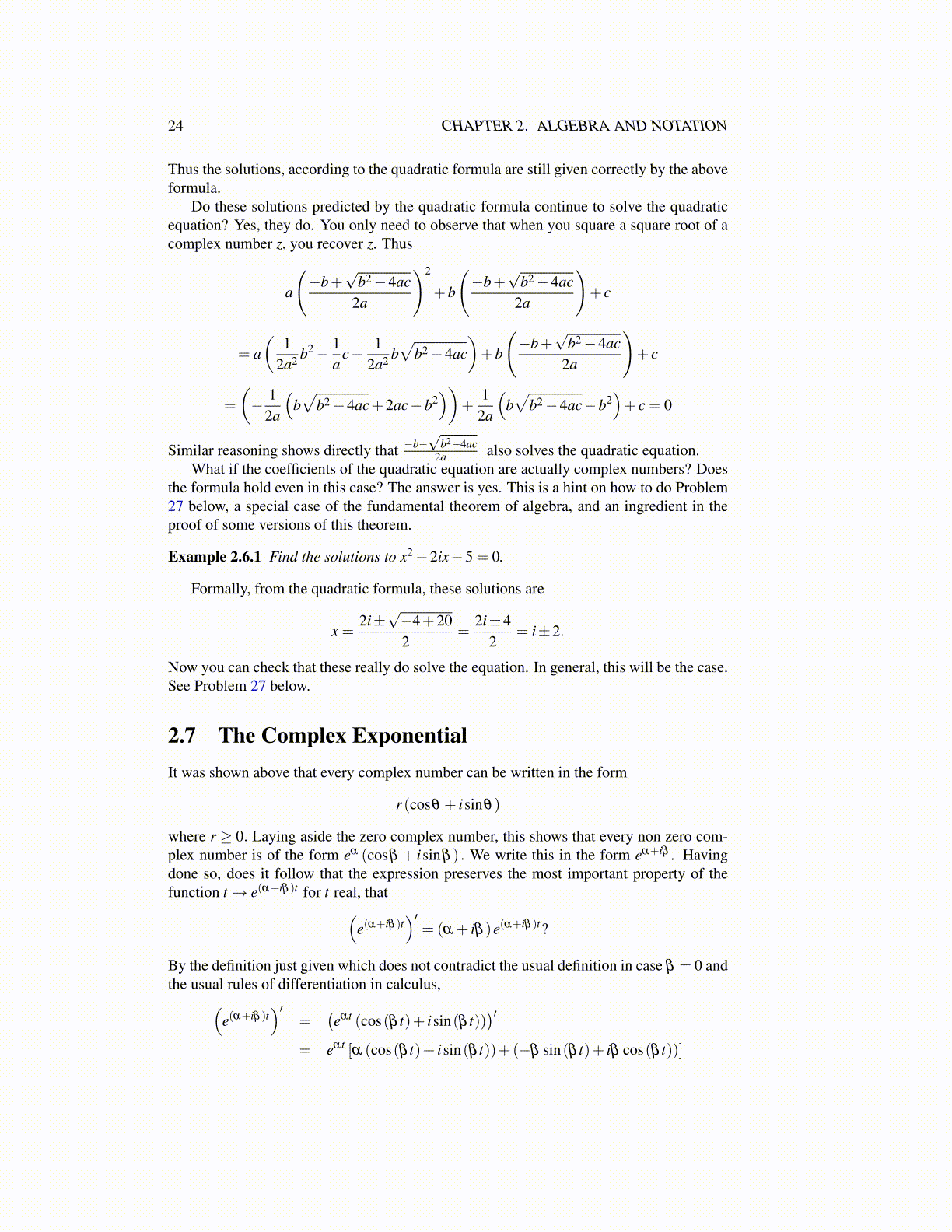
24 CHAPTER 2. ALGEBRA AND NOTATION
Thus the solutions, according to the quadratic formula are still given correctly by the aboveformula.
Do these solutions predicted by the quadratic formula continue to solve the quadraticequation? Yes, they do. You only need to observe that when you square a square root of acomplex number z, you recover z. Thus
a
(−b+
√b2−4ac
2a
)2
+b
(−b+
√b2−4ac
2a
)+ c
= a(
12a2 b2− 1
ac− 1
2a2 b√
b2−4ac)+b
(−b+
√b2−4ac
2a
)+ c
=
(− 1
2a
(b√
b2−4ac+2ac−b2))
+1
2a
(b√
b2−4ac−b2)+ c = 0
Similar reasoning shows directly that −b−√
b2−4ac2a also solves the quadratic equation.
What if the coefficients of the quadratic equation are actually complex numbers? Doesthe formula hold even in this case? The answer is yes. This is a hint on how to do Problem27 below, a special case of the fundamental theorem of algebra, and an ingredient in theproof of some versions of this theorem.
Example 2.6.1 Find the solutions to x2−2ix−5 = 0.
Formally, from the quadratic formula, these solutions are
x =2i±√−4+202
=2i±4
2= i±2.
Now you can check that these really do solve the equation. In general, this will be the case.See Problem 27 below.
2.7 The Complex ExponentialIt was shown above that every complex number can be written in the form
r (cosθ + isinθ)
where r ≥ 0. Laying aside the zero complex number, this shows that every non zero com-plex number is of the form eα (cosβ + isinβ ) . We write this in the form eα+iβ . Havingdone so, does it follow that the expression preserves the most important property of thefunction t→ e(α+iβ )t for t real, that(
e(α+iβ )t)′
= (α + iβ )e(α+iβ )t?
By the definition just given which does not contradict the usual definition in case β = 0 andthe usual rules of differentiation in calculus,(
e(α+iβ )t)′
=(eαt (cos(β t)+ isin(β t))
)′= eαt [α (cos(β t)+ isin(β t))+(−β sin(β t)+ iβ cos(β t))]